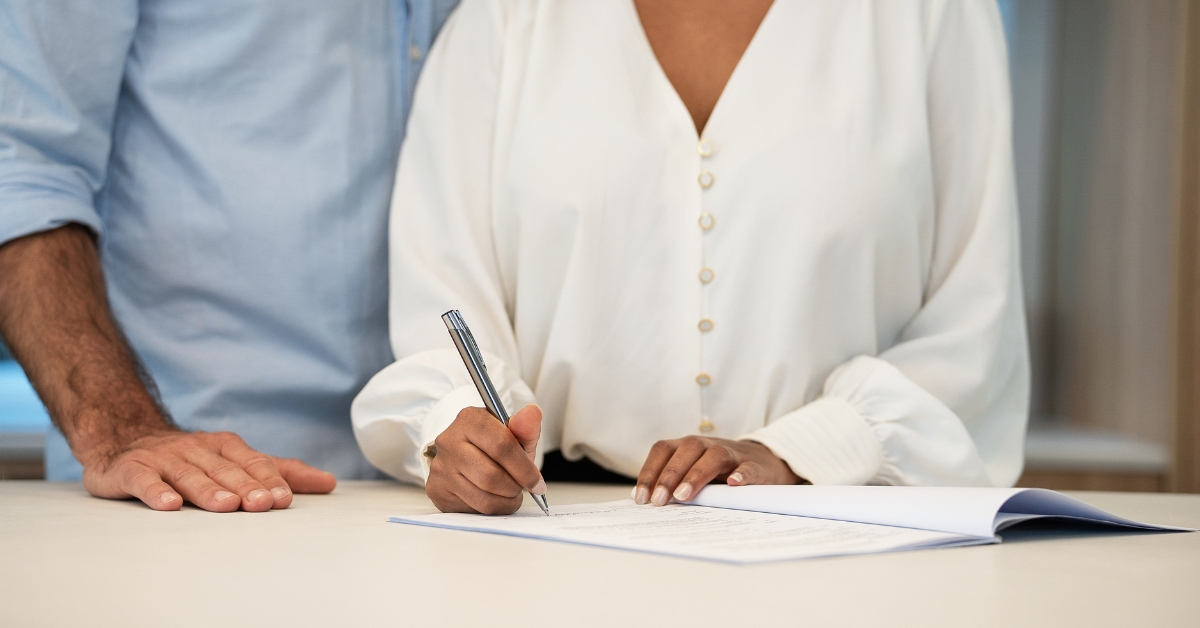Renting Real Estate in New South Wales

Ready, set, rent. For many people that either aren't ready to buy real estate, or perhaps bought an investment property elsewhere but still want to live in the city, renting in NSW remains the most viable option.
Even though it offers more fluidity than the relative permanence of buying a home, there are still a lot of legalities and costs you should keep a close eye on. So, let's take a look at the process of becoming a tenant in NSW.
Where to look for a rental property in NSW
For basic research on the cost of renting in specific suburbs, you can conduct independent research from websites like domain.com.au, realestate.com.au and ljhooker.com.au. CoreLogic RP Data and Australian Property Monitors are also useful resources for general market research on vacancy rates and rental costs in various suburbs throughout New South Wales.
However, the use of a property management service can be much more direct, taking a lot of the hassle out of the process. The LJ Hooker Property Management team has rental properties right across New South Wales, and they are happy to help you find one that suits your specific wants and needs.
The importance of inspections
Make sure you spend time thoroughly inspecting any rental property in NSW you look at. Check all furnishings and fittings, and ensure everything is in proper condition. It will be expected that the home be in good condition at the end of your lease, to ensure it is in good condition when you move in. Mould, plumbing, heating, cooling, water pressure, whiteware and any outdoor areas in particular should be carefully scrutinised.
Applying for rental property in NSW
How to become a tenant in NSW
Before you can move into a rental property, you will likely have to go through an application process. You may have to provide proof of income, references from previous tenancies, as well as personal identification.
On top of this, it pays to know who regulates any issues you come up against. Most rules for renting in NSW are covered under the Residential Tenancies Act 2010, and NSW Fair Trading tends to be the mediating body for disputes, issues and complaints. They have specific resources for starting, conducting and even ending a tenancy.
The new tenant checklist
As NSW Fair Trading points out, before you sign a tenancy agreement you must be given a tenancy checklist from the landlord or the agent in charge. You also should make sure you have the following information:
- A bond lodgment form
- The checklist itself
- Your tenancy agreement
- Two copies of the report detailing the condition of the rental property
- Any repairs that will be made by the landlord, recorded in writing
- A certificate of compliance for any spa or pool on the property (as of April 29, 2016)
Without this, you shouldn't sign onto a tenancy. A NSW tenancy agreement is a legally binding contract, often for periods of more than a year. Don't get locked into something you don't understand.
The costs of NSW rental property
Another important step when you become a tenant in NSW is sorting out the costs of rental property. You cannot pay more than two weeks of rent in advance unless you offer to, and a bond cannot be more than four weeks of rent.
There are also certain costs that you cannot be responsible for: getting keys or swipe cards to each tenant named on the agreement, as well as any costs associated with setting up bonds and paperwork. If you have any issues here, Fair Trading NSW outlines the process for raising it with a landlord or property manager. Housing NSW is also a useful reference point.
If rent is to be increased, your landlord or property manager has to give you at least 60 days notice, and it must be done in writing. The notice has to clearly state how much rent would increase by, when this would occur, and it has to be clearly directed to the leaseholder and dated appropriately, not to mention signed off. This can be negotiated, and even taken to the NSW Civil and Administrative Tribunal for mediation and deliberation.
However, if you have signed a tenancy agreement for less than two years, rent cannot be increased unless this provision was made in the initial contract. That's why careful scrutiny of your paperwork is so important!
On top of these, you may have other costs associated with renting to take on board:
- A holding fee, to ensure your space in the rental property. In NSW, this is one week's rent at most.
- A refundable fee to secure keys for a viewing prior to signing the tenancy agreement.
- Personal costs for duplication of extra keys.
- Setup fees for electricity, water and power.
- Insurance or legal requirements stipulated in the tenancy agreement.
- The cost of setting up a tenancy agreement of 3 or more years - payable to the NSW Land and Property Management Authority.
Condition reports
When you sign a tenancy agreement, there should be a condition report which outlines the exact state the property is in. This plays an important role in getting your bond back, and close inspection of NSW rental property allows the condition report to be filled out accurately.There must be two copies provided, one for you and one for the landlord. You can look over this, fill it out and return to the landlord within seven days of it being issued. This will also outline any repairs to be conducted by the landlord, which becomes a binding contract.
For more details, NSW Fair Trading outlines exactly how to fill out a condition report, and what it should contain.
Signing the tenancy agreement
There are two main types of tenancy agreements than you can sign onto in NSW, each specifying a different kind of stay.Fixed term agreement
This is a contract to stay in a NSW rental property for a fixed period of time, often 6 to 12 months, but it can be much longer. This can be renewed upon agreement between both tenant and landlord.Periodic agreement
A periodic agreement can begin immediately when you move into a NSW rental property, but it generally follows on from an initial fixed term agreement. This type of tenancy agreement has no fixed end date, but with the same rules and regulations as a fixed contract.Reading the fine print
The tenancy agreement will also outline your rights and responsibilities as a tenant in NSW rental property. This ranges from your obligation to clean the carpets to insurance requirements, to whether you can have pets on the property, to the consequences of falling into arrears with your rent.
Without a signed tenancy agreement, the landlord has the right to evict you or increase rent without notice. Setting out this paperwork establishes the boundaries of your tenancy clearly, so you know exactly what your rights and responsibilities are. You must be given a copy of the tenancy agreement once it is signed.
Once you begin your tenancy, you are obliged to maintain the condition of the NSW rental property and continue paying rent as the tenancy agreement outlines. For any questions about the renting process, contact your local LJ Hooker property management team.
Renting real estate in New South Wales means abiding by a certain set of laws, and making sure you get off on the right foot with paperwork and payments.
DISCLAIMER - The information provided is for guidance and informational purposes only and does not replace independent business, legal and financial advice which we strongly recommend. Whilst the information is considered true and correct at the date of publication, changes in circumstances after the time of publication may impact the accuracy of the information provided. LJ Hooker will not accept responsibility or liability for any reliance on the blog information, including but not limited to, the accuracy, currency or completeness of any information or links.



